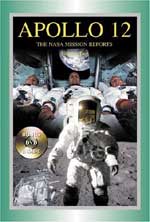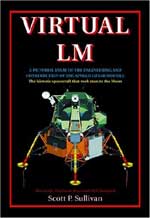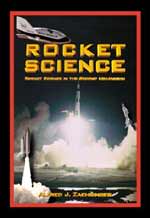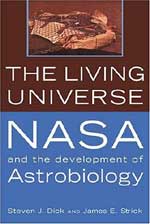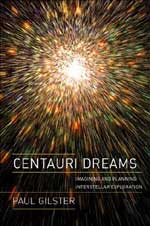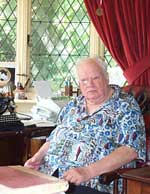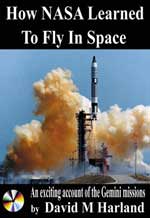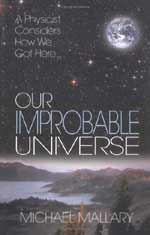
A long time ago, in our universe, everything (energy, matter and light) was contained within the volume of about a grapefruit. This is the starting point for Mallary. From this, he then shows how 14 fundamental relationships translated this existence to the one we live in today. Quarks and their conjugation-parity symmetry together with the four forces (gravitational, electromagnetic, and the strong and weak nuclear forces) are at one relational extreme. Reality in three dimensions and the exclusion of two electrons from being in the same quantum state are at another. Having set these, he demonstrates their effect in creating one human filled planet, ours, in a solar system within a somewhat average galaxy somewhere in the confines of existence.
As much as Mallary’s translations show how the grapefruit changed with time, he also shows how different translations would have led to a much different universe. For example, if the expansion rate of the early universe was greater, then atoms could not have coalesced into stars. If lower, then the universe would have collapsed into itself long before any human type life could have evolved. He brings this same perception to the formation of protons, atoms, stars, and planets. Without each of these particular translations, an alternative universe could exist but would be fundamentally quite different, though not perhaps any less probable, than our own. Physical properties balance our universe’s characteristics on a knife’s edge. Too much, more or less, could nullify a critical component and a resulting universe would be vastly different than ours.
Mallary gives this same treatment to life forms. Rather than a grapefruit size universe, he starts with RNA and DNA sequences. Again we read that a definitive prescription dictates life as we know it. Nevertheless, we get shown that particular conditions did shape the evolution of Earth’s life in a special way and many other outcomes could have been possible. For example, atmospheric changes from carbon dioxide to oxygen directly changed resident life forms. Without these changes, we wouldn’t likely be here. A more direct effect arose from, mass extinctions empowered certain species, one in particular that gave rise to the prominence of mammals and ourselves. Using a chronological outline, he steps through these conditions, arguing that most of these were important if not critical for development into today’s humans. In spite of this, he then goes on to note that these conditions are not particularly unique and life, human like or other, could and should easily occur elsewhere.
At about this point in the book, about half way through, Mallary stops using this scientific analysis for physical changes and starts applying it to people and societies. If you can imagine, it is like the ship ‘Scientific Analysis’ running hard into the ship ‘Philosophy’. Anthropomorphism gets mixed up with divine creation, which gets mixed up with randomness, which all leads to consider the question about the purpose of life, though he never directly raises this question. In summary, he nicely ties this into a discussion on our actions today, their reasonableness and what the future might have in store. His speculations about searching for the signature of a creator are particularly entertaining as he attempts to setup verifiable, scientific conditions.
However, this significant switch in style by the author is a bit disconcerting. The first of the book reads like a text. It gives examples, provides diagrams and discusses current theories and ideas. The later part of the book diverges into ‘ether’ like subjects, such as wondering if cyber viruses are life forms. In spite of this, the discussions provoke much contemplation such as the debate on the wisdom of contacting aliens.
For all we know, the only universe which we will ever sense is our own. There may be other universes but as Michael Mallary demonstrates in his book Our Improbable Universe ours is very unique and much of its constituents, including us, depends very much upon this uniqueness. Within this book, he also provides much insight into how these relationships shaped our existence, while cajoling us into using all our senses to making the best of ourselves during our life within our universe.
To get your own copy, visit Amazon.com.
Review by Mark Mortimer

